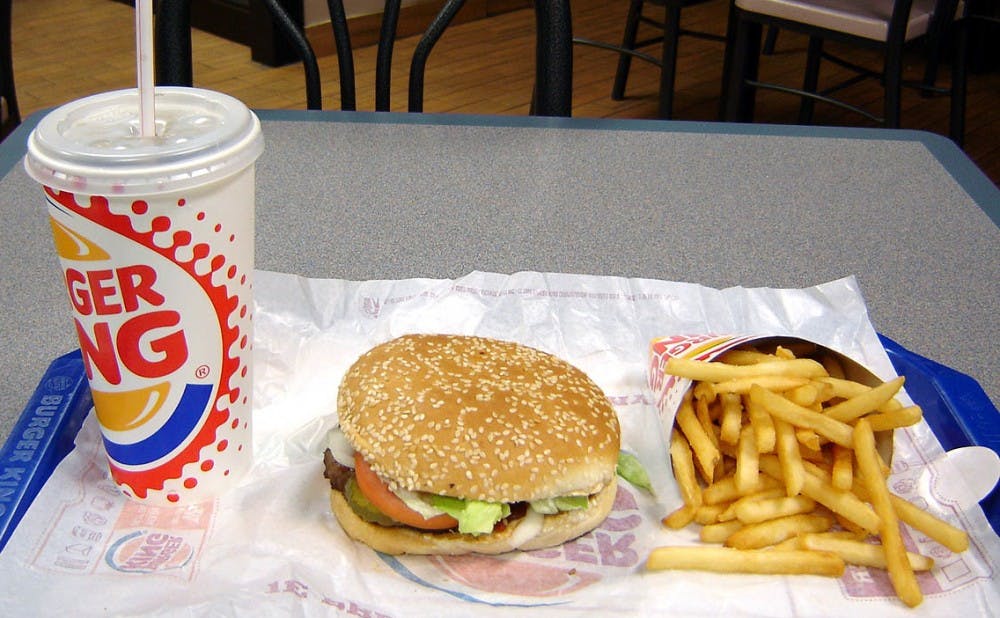It seems that sports and junk food just go well together. What’s the point of even watching a football game without chowing down on pizza and wings? However, new research has revealed that many of the food items marketed through sports sponsorships are bad for you—and may be contributing to nationwide obesity rates.
The study—co-authored by Kelly Brownell, dean of the Sanford School of Public Policy—found that the majority of food and beverages advertised through companies’ partnerships with television and online sports programs are unhealthy.
Marie Bragg, assistant professor of population health at the New York University School of Medicine and the study's lead investigator, noted that she was motivated to investigate this topic because it struck her as strange that people watch athletes exercise and then see a commercial advertising junk food.
“I think it sends a mixed message to everyone watching but particularly to kids,” she said.
In the study, the researchers used guidelines from the Nutrient Profile Model, which identifies items' nutritional value and assigns a score to all foods. These scores can be converted to a 100-point scale that is called the Nutrient Profile Index, with a score of 64 or higher indicating that a food is nutritious.
They analyzed the 10 sports organizations that were the most watched among kids ages 2 to 17 in 2015, which included the National Football League, the Major League Baseball Association, the National Hockey League and the National Basketball Association.
More than 412 million kids watched sports programs from these 10 organizations in 2015, according to viewership data.
The research showed that more than 75 percent of the products marketed during the sports programs did not meet minimal standards for nutrition, with the average NPI score falling between 38 and 39.
Alysa Miller, research coordinator at the New York University Langone Medical Center who worked on the study, said she found it surprising that plain water was only advertised six times out of 200 beverages.
“These organizations are sports-related, so you would think healthier products would be featured the most,” she said.
Out of the 173 products in advertisements that they studied, only 41 of them were healthy foods, she added.
Bragg explained that the research is important because the association between unhealthy products and athletes or sports can give viewers a false perception that these items are healthy. This involves a concept called “brand transfer”—for instance, watching a commercial for candy bars sponsored by the NCAA could result in your feelings about the NCAA and health transferring over to the candy brand.
This kind of marketing also sends the message that it’s okay to eat as much junk food as you want if you exercise.
“It places an emphasis on physical fitness as opposed to diet, and we know that maintaining a healthy weight is done by dietary behaviors,” Bragg said.
Although previous studies have shown that food marketing is a major cause of childhood obesity, this study is unique in that it examines how major sports organizations are contributing to the problem, Bragg said.
Miller added that kids are heavily influenced by the programs they view, which could lead them to engage in unhealthy behaviors leading to diet-related diseases like Type II diabetes.
Bragg indicated that future research should consider what kind of food marketing is happening on social media exposure and how that relates to food consumption behavior. Policy makers also need to consider who is responsible for the prevalence of these ads—the sports organizations or food companies.
“Probably the answer is a little bit of both, but it’s an important piece of the puzzle,” Bragg said.
Get The Chronicle straight to your inbox
Signup for our weekly newsletter. Cancel at any time.

